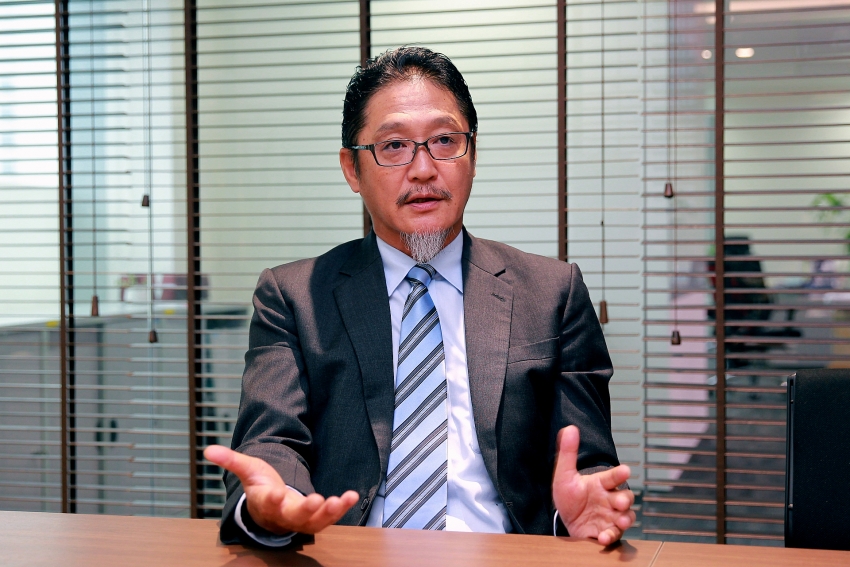Strengthening local automobile production and localisation rate
 |
| Toru Kinoshita, chairman of the Vietnam Automobile Manufacturers' Association |
Is the Vietnamese automobile industry competitive and capable to produce and export a CBU car? Or is it only capable of producing and exporting car parts?
Currently, the size of the Vietnamese market is quite small compared to other ASEAN members such Thailand, Indonesia, leading to the small scale of production. As a result, production costs are not competitive. In this situation, it is difficult to produce a whole car and export to other countries, mainly because of our cost incompetitiveness. In the future, if the market expands enough and/or the government has supporting policies equivalent to rival nations, Vietnam can have chance and the conditions to produce and export cars.
As for parts, Vietnamese manufacturers are already producing and exporting parts to other countries, but their business is very limited and extend only to labour-intensive parts.
Import duty on CBU vehicles from the ASEAN has been removed, along with administrative barriers like Decree 116 to prevent CBU imports, as a result of which a lot of firms resumed importing to Vietnam. What are the challenges to local manufacturers in producing a CBU car or increasing localisation rates?
As I previously said, production in Vietnam is smaller in scale than in Thailand or Indonesia. The scale of production greatly affects production costs as production cannot support the increase of localisation for parts production, which is critical to reduce costs. If you invest in the production of new cars, you will need to invest in die or jig production, which is very costly.
For that amount of money, if we produce in small volumes, unit costs will be very high. In Thailand they can produce ten times as many cars with the same investment. This lack of competitiveness strongly affects investment decisions.
If there is support from the government to overcome the difficulties, increasing the production scale, Vietnam can become sufficiently competitive.
Recently, there has been a trend of protectionism, with several countries erecting trade barriers to protect local goods and governments calling back companies to invest domestically. This trend will certainly impact Vietnam. Where do you see Vietnam in the future?
We think Vietnam has a bright future ahead. In 10-20 years, economic development will be even faster thanks to the big population and the improved quality of human resources. I do believe that Vietnam will become a huge market and the automobile industry will also grow.
However, to turn potential into results, it is necessary to continue to create a favourable business environment, have consistent and stable policies, and especially to realise the intention behind specific policies and actions.
What specific policies does Vietnam have in place to enhance local automobile production? What do you think about applying 0 per cent import tax for CKD parts?
We regularly recommend consistent policy solutions to achieve the following development goals:
(1) Having long-term policies to maintain the stable development of the market;
(2) Having supporting policies for domestic production to increase cost competiveness, narrow the production cost gap, and treating all domestic producers in a fair and transparent manner – in this sense, we support the idea of applying the 0 per cent tax for CKD parts;
(3) Having practical and feasible policies to support the development of parts suppliers, such as the reducing the cost of die, jigs or introducing tax incentives or human resources development.
What the stars mean:
★ Poor ★ ★ Promising ★★★ Good ★★★★ Very good ★★★★★ Exceptional
Related Contents
Latest News
More News
- Kolon signs $48 million airbag supply deal with Autoliv (December 15, 2025 | 18:14)
- National Assembly approves Vinh–Thanh Thuy expressway project (December 15, 2025 | 18:02)
- Quang Tri green-lights $1.59 billion LNG-fired power project (December 15, 2025 | 17:59)
- Stress laid on high-quality FDI inflows (December 15, 2025 | 11:00)
- Can Tho utilises its growth advantages (December 15, 2025 | 09:09)
- Ca Mau unlocking potential to shape a more sustainable future (December 15, 2025 | 09:02)
- Major projects to be inaugurated nationwide (December 15, 2025 | 08:00)
- MoF workshop highlights mounting concerns over ODA on-lending costs (December 12, 2025 | 16:05)
- National Assembly approves pilot mechanisms to accelerate major projects in Hanoi (December 12, 2025 | 11:29)
- Legislation gives government flexibility for loan guarantees (December 11, 2025 | 18:04)

 Tag:
Tag:



























 Mobile Version
Mobile Version